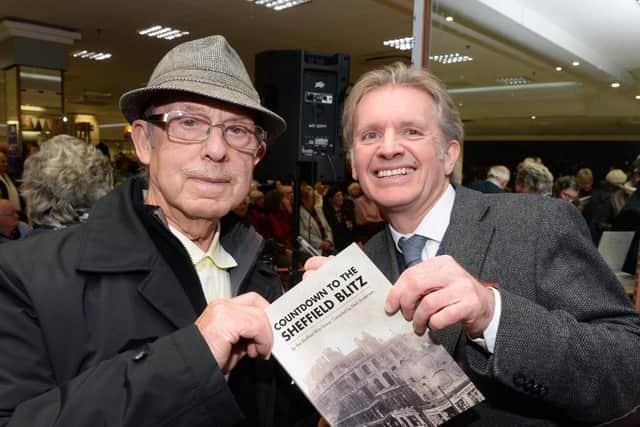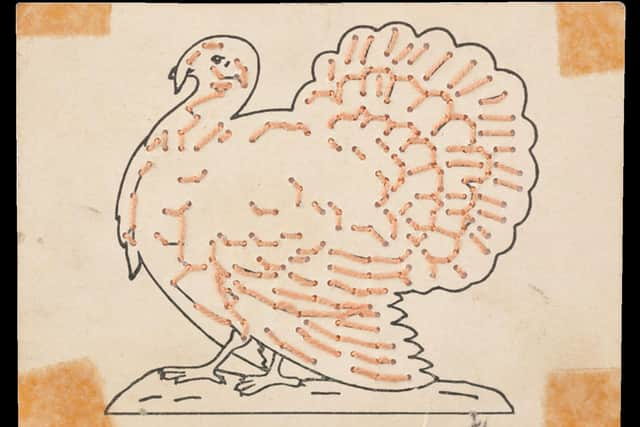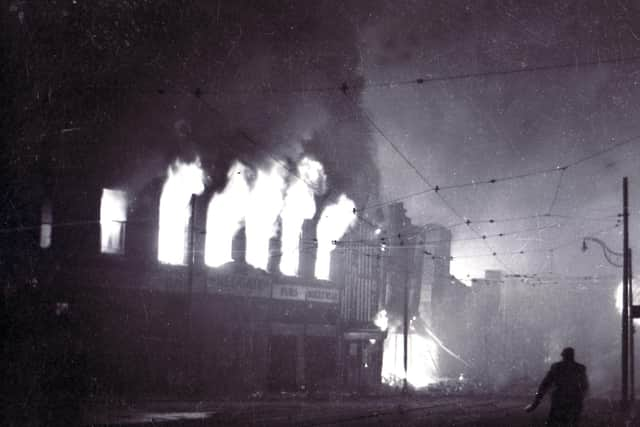Sheffield author Neil Anderson relaunches book that led to proper tribute to city sacrifice in Blitz
and live on Freeview channel 276
Neil Anderson – who started his career in local government communications – has put out the call for memories about the attacks of 1940 for a 10th anniversary edition of his best-selling Sheffield’s Date With Hitler which is due out in the autumn.
His Sheffield Blitz campaign – which was done in conjunction with the Sheffield Telegraph’s sister paper The Star - culminated in everything from the launch of a heritage trail to a permanent museum that is now housed inside Shalesmoor’s National Emergency Services Museum.
Advertisement
Hide AdAdvertisement
Hide AdNeil attributes much of the success of the initial campaign down to his ability to rally support for the cause through his PR skills


He says: “The one thing that really struck me when I wrote the original book was how little there was to mark the devastating attacks of 1940.
“In fact, when the BBC turned my book into a documentary they called it Sheffield – The Forgotten Blitz.
“I was on a mission to do something after that!”
Neil worked with two colleagues – Richard Godley and Bill Bevan – on an application to the Heritage Lottery Fund.


They backed their plans to the tune of more than £80,000.
Advertisement
Hide AdAdvertisement
Hide AdThe Sheffield Blitz exhibition has doubled the numbers of visitors attending the National Emergency Services Museum since it opened, with visitors travelling from as far as Australia to see it.
The Luftwaffe attacks killed and wounded more than 2,000 people and made nearly a tenth of the city’s population homeless in December 1940.
The devastating attacks changed the face of the city forever and flattened much of the city centre.


Neil says: “When I first started the campaign I used to see the amount of media coverage the Coventry Blitz used to get – we were forgotten.
Advertisement
Hide AdAdvertisement
Hide Ad“I now understand Coventry has been looking to Sheffield for inspiration!”
A free Sheffield Blitz walking app can be downloaded from the Google Play Store or the App Store.
The new edition of Sheffield’s Date With Hitler will be out to mark the 80th anniversary of the attacks in December.


Another book looks back at the first air raid that took place in Sheffield – in 1916.
Advertisement
Hide AdAdvertisement
Hide AdMilitary historian Ian Castle’s The First Blitz in 100 Objects features children’s sewing cards recovered from the wreckage of the houses destroyed by a Zeppelin bomb in Cossey Road, Sheffield.
A memorial can be seen on a wall in Effingham Road, near an entrance to the old Baltic Works. It records that nine men, 10 women and 10 children were killed on September 26, 1916.
The death toll included nine people on Corby Street and 13 people on Cossey Road.
A hotel, a chapel and 89 houses in the Darnall-Burngreave area of the city were seriously damaged and 150 other houses suffered more minor damage.
Advertisement
Hide AdAdvertisement
Hide AdThe Sheffield Independent newspaper reported in distressing detail what happened to a family and their neighbours sheltering in the cellar of 26 Cossey Road, although wartime censorship meant no mention of Sheffield, just a ‘Midland town’.
It said: “The terrified people had evidently congregated in the cellar of one house and here eight of them were found huddled together dead at the bottom of the cellar steps, three children at least being in the party.
“The bomb evidently struck point blank, penetrating the buildings and then exploded in the cellar, blowing everything to smithereens.
“In this group of victims there were husband, wife, two children and two grandchildren and all were killed.”
Advertisement
Hide AdAdvertisement
Hide AdThe book tells how the First World War ushered in many new and increasingly deadly weapons, along with strategies for using them.
Germany’s sustained aerial bombing campaign against Britain opened a new theatre of war — the Home Front.
The centenary commemorations of the end of the War in 2018 brought renewed attention to this campaign, so often hidden in the shadow of the Blitz of the Second World War.
Many heard, some for the first time, how taking on the German airships and aeroplanes in this first Blitz laid the ground rules for how the nation would face up to and ultimately defeat that later aerial campaign.
Advertisement
Hide AdAdvertisement
Hide AdThere are still fascinating glimpses of this air campaign to be found around the country.
Often unnoticed, each tells its own dramatic tale of death and destruction, or maybe of heroism and narrow escapes.
In museums there are other reminders of the air raids, from aircraft to relics of Zeppelins that brought terror to the British population but were doomed to become nothing more than heaps of burnt and twisted wreckage.
Unexpectedly, a trade in air raid souvenirs developed, from postcards of wrecked houses and bomb craters to china models of Zeppelins and their bombs and pieces of Zeppelin wreckage.
Advertisement
Hide AdAdvertisement
Hide AdAmong the 100 objects brought together in the book, there can also be found tales of resilience and determination as well as humour.
The First Blitz in 100 Objects (£25 hardback) is published by Frontline Books.
